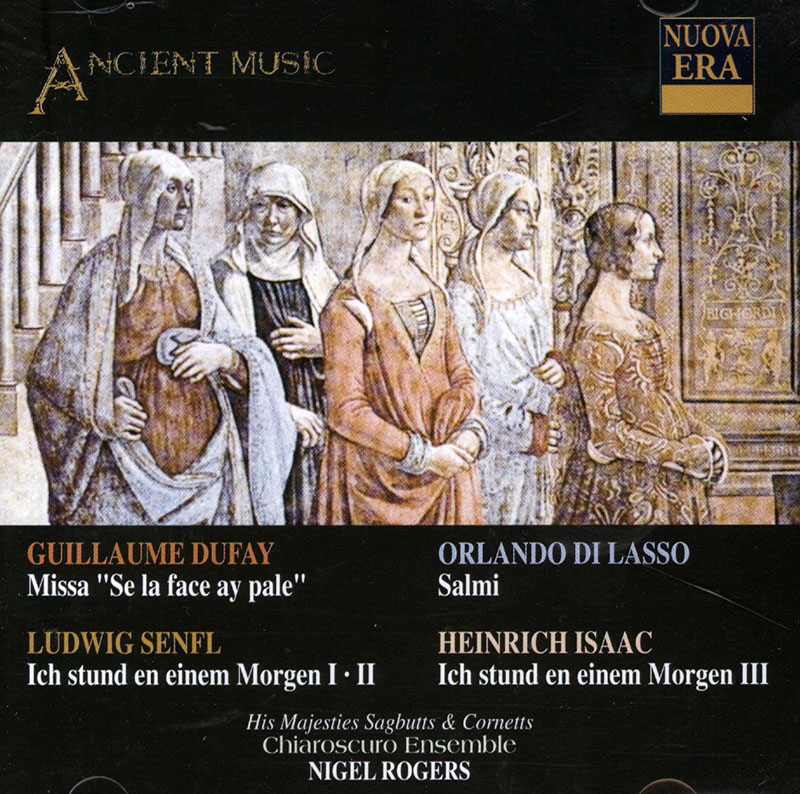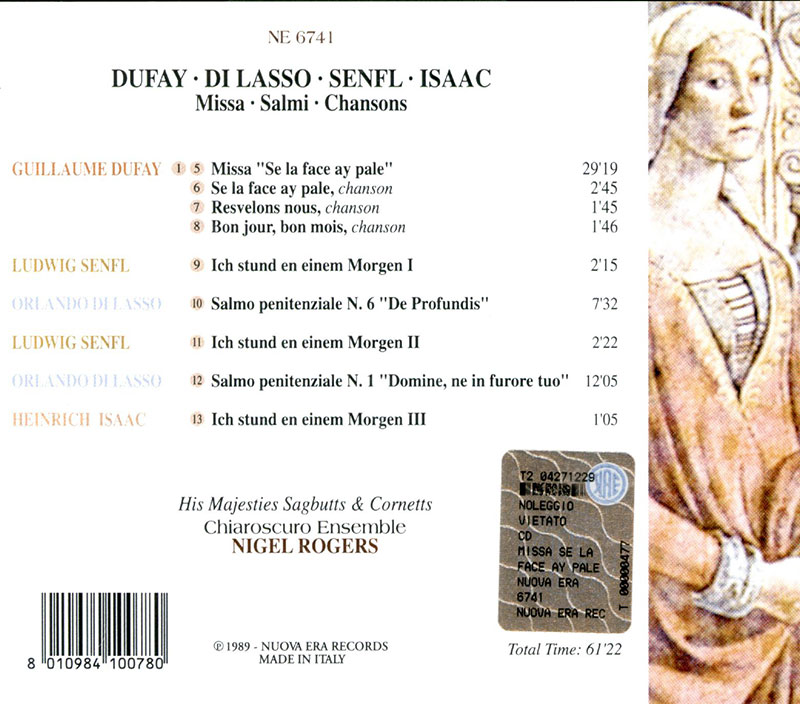Logowanie
Mikołaj - ten to ma gest!
Elton John, The Mamas & The Papas, Cat Stevens, Rod Stewart, Bobbie Gentry, Stevie Wonder, Engelbert Humperdinck
Memory Lane
Edycja Numerowana - 1000 egzemplarzy w skali światowej
RACHMANINOV, Eiji Oue, Minnesota Orchestra
Symphonic Dances / Vocalise
Best Recordings of 2001!!! NAJCZĘŚCIEJ KUPOWANA PŁYTA Z RR!
Karnawał czas zacząć!
Music of Love - Hi-Fi Latin Rhythms
Samba : Music of Celebration
AUDIOPHILE 24BIT RECORDING AND MASTERING
CHOPIN, LISZT, DEBUSSY, DVORAK, Gerhard Oppitz
Dances romantiques - A fantastic Notturno
Wzorcowa jakość audiofilska z Clearaudio
Winylowy niezbędnik
ClearAudio
Double Matrix Professional - Sonic
najbardziej inteligentna i skuteczna pralka do płyt winylowych wszelkiego typu - całkowicie automatyczna
DUFAY, SENFL, di LASSO, Chiaroscuro Ensemble, Nigel Rogers
Missa 'Se la face ay pale' / Salmi / Ich stund en einem Morgen

- Chiaroscuro Ensemble - choir
- Nigel Rogers - conductor
- DUFAY
- SENFL
- di LASSO
Description by Timothy Dickey [-] Guillaume Dufay composed the ballade Se la face ay pale in the 1430s, perhaps for a Savoy wedding in 1434. Its courtly text speaks in clever, punning rhymes of the pale-faced, dejected lover. Another Savoyard event -- such as the 1451 wedding of the Dauphin Louis of Savoy -- may have provided the context later for him to construct an entire cantus firmus mass setting upon the tenor line of his chanson. English composers early in the century had begun to experiment with devices for the musical unification of all five movements of the Mass Ordinary. Leonel Power's Missa Alma redemptoris and John Dunstable's Missa Rex seculorum, as well as anonymous settings of the Missa veterem hominem and the Missa Caput, all present a single cantus firmus melody in the tenor voice in each mass movement, after the fashion of the isorhythmic motet; other English masses essay tunes borrowed from secular song. Dufay's Missa se la face ay pale most likely is the earliest surviving mass setting to do both. The chanson tenor melody, divided into three phrases and sung in the tenor voice of the Mass throughout, provides the framework for each movement of the Mass. In the Kyrie, Sanctus, and Agnus Dei, this cantus firmus is given once over the course of each movement, with duo sections punctuating the structure; the "wordier" movements Gloria and Credo give the tenor melody three times each. This lends to the Mass a complex and "advanced" sense of structural unity by linking groups of movements as subsets within the structure. The outer pair of movements -- Kyrie and Agnus -- apportion the three cantus firmus sections to their tripartite structures as follows: AB/none (duo texture)/C. The inner pair -- Gloria and Credo -- present the entire melody three time, with proportional reductions in the ratio 3:2:1. By the end of each, the tenor's long notes give way to a rhythmic intensity similar to that of the other voices, building a fine climax. These two movements, thus, become a pair of isorhythmic motets of equal length, with identical trajectories. Dufay creates further audible connections across the mass by means of a motto opening: four movements begin with the same melody in the upper voice, while the Kyrie opening clearly alludes to the same melody. This very motto acknowledges the composer's debt to English concepts, as its melodic contour closely parodies the motto opening to the famous English Caput Mass. Furthermore, near the end of each of Dufay's movements, a sunny fanfare section shines through in all four voices: a series of interlocking and overlapping C major triadic motifs, borrowed from the characteristic sound of the chanson model. This jolly concluding passage, as well as the modal clarity of major-key cadences throughout the cycle, make Dufay's Se la face ay pale Mass the most joyful sounding of his group of four late cantus firmus settings. Its sonic world belies the stereotypical distress of the chanson's bereft lover, aptly describing the presumed nuptial bliss celebrated in the Mass.





























